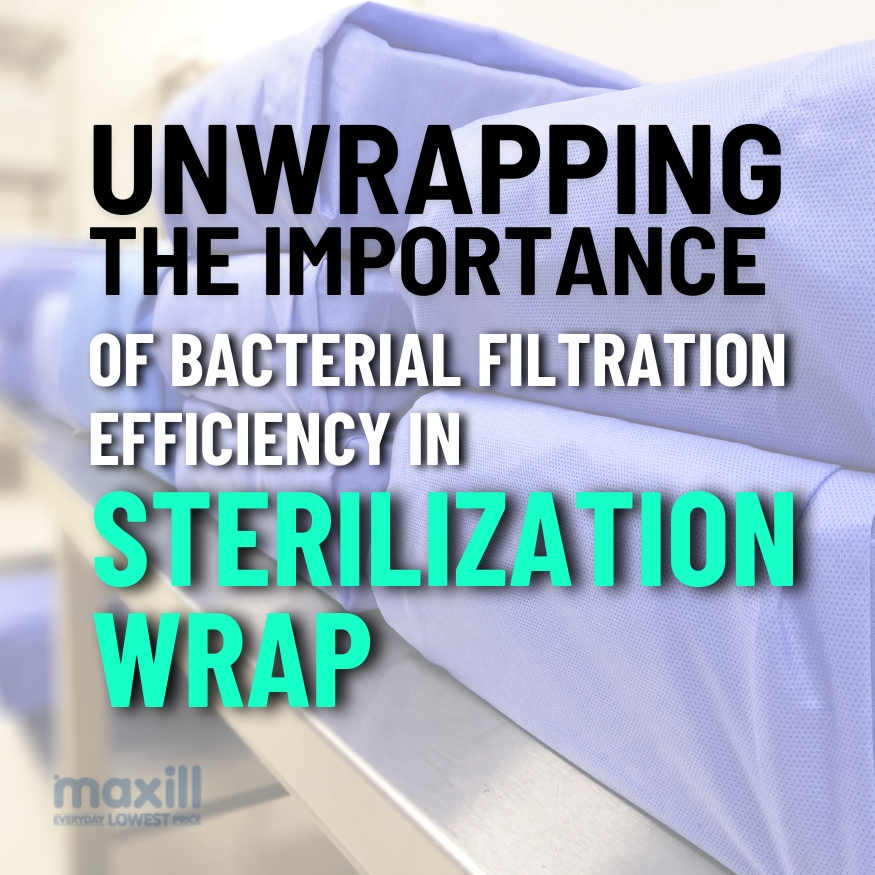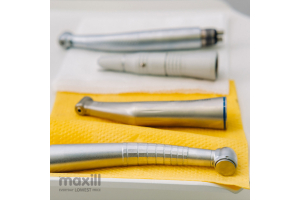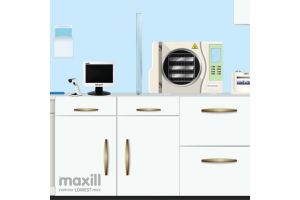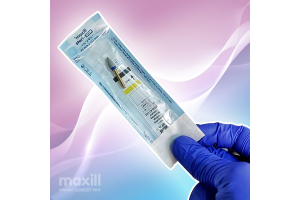Unwrapping the Importance of Bacterial Filtration Efficiency in Sterilization Wrap

Bacterial Filtration Efficiency (BFE) is a measure used to evaluate the effectiveness of material at filtering out bacteria from a liquid or aerosolized solution. It’s often used in the context of healthcare settings, including dental offices, to assess the performance of sterilization wraps.
In dental offices, Infection Prevention and Control (IPAC) protocols are critical for maintaining a safe and sterile environment for patients and staff. Sterilization wraps are used to cover instruments and equipment to prevent contamination and ensure the remain sterile until use.
The BFE of sterilization wraps indicates how well the material can filter out bacteria, which is crucial for preventing the transmission of infectious agents during dental procedures. Higher BFE values signify better filtration efficiency, meaning the wrap is more effective at preventing bacterial contamination.
IPAC protocols in dental offices often require the use of sterilization wraps with high BFE ratings to minimize the risk of cross-contamination and infection transmission. Dental practitioners must adhere to these protocols by selecting appropriate sterilization wraps and ensuring they are used correctly to maintain a sterile environment and protect the health and safety of patients and staff.
“The need to use one wrapper or two will depend on the characteristics of the single-use wrapping material. The MIFUs should be consulted.” -Canadian Standards Association (CSA Z134:23:8)
Bacterial Filtration Efficiency (BFE) values indicate the percentage of bacteria that a material can filter out under controlled conditions. For medical and dental sterilization wraps, higher BFE values signify greater effectiveness at filtering out bacteria. When it comes to single sheet wrapping versus double sheet wrapping, there are differences in how they are evaluated and utilized.
SINGLE SHEET WRAPPING
-
-
-
-
- Single sheet wrapping involves using one layer of sterilization wrap to cover instruments or equipment.
- BFE values for single sheet wrapping typically range from 95% to 99.9%
- While single sheet wrapping can provide adequate protection against contamination, it may be more susceptible to tears or punctures compared to double sheet wrapping.
-
-
-
DOUBLE SHEET WRAPPING
-
-
-
-
- Double sheet wrapping involves using two layers of sterilization wrap, with the inner wrap maintaining sterility while the outer layer of wrap provides additional protection.
- BFE values for double sheet wrapping whether are generally higher, often exceeding 99%.
- Double sheet wrapping offers an extra layer of protection against contamination and may be preferred for sterilizing instruments or equipment that may have longer storage time before use or is being transported with a traveling clinician.
-
-
-
"Once sterilized and removed from the sterilizer, the contents of a containment device must remain sterile until they are used. Handling, transport, and storage could cause a breach of sterility and render the contents unusable."
-Association for the Advancement of Medical Instrumentation (ANSI/AAMI ST77:2013/(R)2018:Section 4.4.4.1)
DOUBLE WRAPPING OPTIONS
-
-
-
-
-
- Simultaneous wrapping with 2 single wrap sheets.
- Sequential wrapping with 2 single wrap sheets.
- One; Bonded double wrap sheet.
-
-
-
-
In wrapping up, regardless of your chosen method, selecting sterilization wraps with high BFE values is crucial for maintaining sterility and preventing cross-contamination within a healthcare setting. Dental practitioners should refer to industry standards and guidelines, such as those provided by organizations like the Centers for Disease Control and Prevention (CDC), or the Canadian Standards Association (CSA), to ensure they are using sterilization wraps that meet recommended BFE requirements for their specific applications.
It's important to note that while BFE values are an essential consideration, they are just one aspect of evaluating the effectiveness of sterilization wraps. Other factors, such as material strength, tear resistance, breathability, and compatibility with sterilization methods (e.g., steam autoclaving), should also be taken into account when selecting the appropriate sterilization wrap for dental practice.
Resources:
1. Canadian Standards Association. (2023). Canadian medical device reprocessing in all health care settings (CSA Standard No. Z314-23)
2.Chau, D. F., O'Shaughnessy, P., & Schmitz, M. L. (2021). Particle Filtration Efficiency Testing of Sterilization Wrap Masks. Journal of preventive medicine and public health = Yebang Uihakhoe chi, 54(1), 31–36. https://doi.org/10.3961/jpmph.20.394
3. Association for the Advancement of Medical Instrumentation. (2013). Containment devices for reusable medical device sterilization (ANSI/AAMI Standard No. ST77:2013/(R)2018). https://webstore.ansi.org/preview-pages/aami/preview_st77_2018_reaff.pdf





